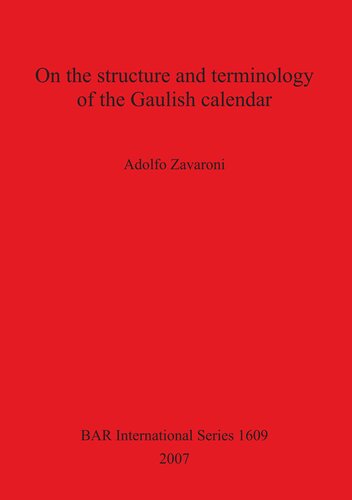

Most ebook files are in PDF format, so you can easily read them using various software such as Foxit Reader or directly on the Google Chrome browser.
Some ebook files are released by publishers in other formats such as .awz, .mobi, .epub, .fb2, etc. You may need to install specific software to read these formats on mobile/PC, such as Calibre.
Please read the tutorial at this link: https://ebookbell.com/faq
We offer FREE conversion to the popular formats you request; however, this may take some time. Therefore, right after payment, please email us, and we will try to provide the service as quickly as possible.
For some exceptional file formats or broken links (if any), please refrain from opening any disputes. Instead, email us first, and we will try to assist within a maximum of 6 hours.
EbookBell Team

4.8
84 reviewsThe so-called Coligny Calendar was discovered in November 1897 by a Monsieur Roux in a field north of Coligny (Ain, France). He came across the fragments of a buried statue of a young male deity and, with it, the broken-up remains of what had once been alarge bronze plaque. The more than 150 individual fragments, most of which bore writings and numerical values aligned to vertical lines of holes, were quickly recognized as pieces of a calendar, written in Roman capitals. The language was later recognized as Gaulish. Archaeological analysis showed that the fragments had been collected in a container made from a vegetal fibre. Archaeologists have suggested several hypotheses for this strange circumstance. The most accredited of them is that a druid wanted to save the remaining fragments of the calendar, burying them underground in a wood, and for the statue, evidently a sacred object, that it had been broken up for some dramatic event. The analysis proposed in this volume is that the plaque does not bear a solar calendar, but shows essentially the structure of a lunar calendar, based on a given yearly lunation pattern, and adapted to the solar course by means of two intercalary months. Therefore it could be a scientific instrument, the result of a cognitive study that perhaps was not used alone, but together with the solar Julian Calendar.